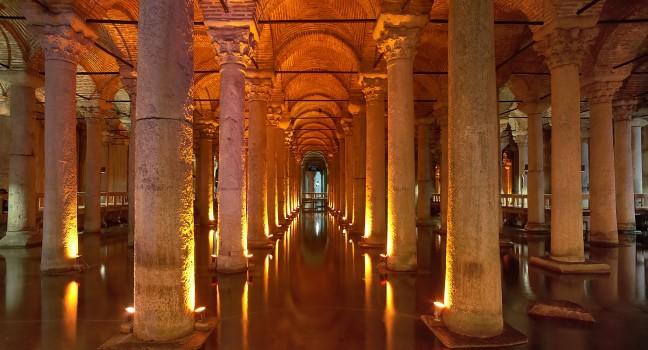Yerebatan Sarnıcı

The major problem with the site of Byzantium was the lack of fresh water. So, for the city to grow, a great system of aqueducts and cisterns was built, the most famous of which is the Basilica Cistern, whose present form dates from the reign of Justinian in the 6th century. A journey through this ancient underground waterway takes you along dimly lit walkways that weave around 336 marble columns rising 26 feet to support Byzantine arches and domes, from which water drips unceasingly. The two most famous columns feature upturned Medusa heads. The cistern was always kept full as a precaution against long sieges, and fish, presumably descendants of those that arrived in Byzantine times, still flit through the dark waters. A hauntingly beautiful oasis of cool, shadowed, cathedral-like stillness (with Turkish instrumental music playing softly in the background), the cistern is a particularly relaxing place to get away from the hubbub of the Old City. Come early to avoid the long lines and have a more peaceful visit. This site is closed for renovations as of spring 2022. Check the website for updates.



